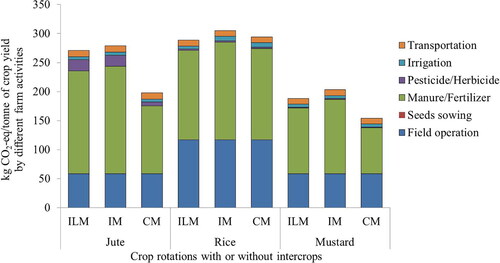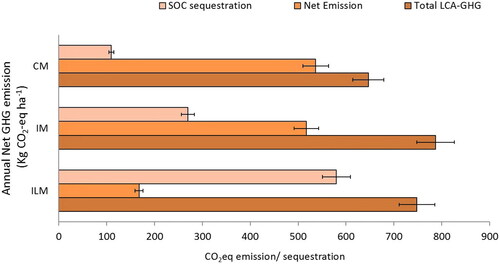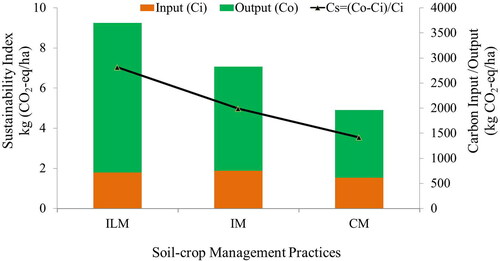Figures & data
Figure 2. Intercropping of pumpkin with rice (SRI) under ILMsoil system. A: After 15 days of Transplantation; B: At maturity stage of rice.

Table 1. Crop management including annual application of manure and fertilizer under different soil management treatments.
Table 2. Greenhouse gas (GHG) emission coefficient of farm inputs used in the study.
Table 3. Change in soil nutrient content during the experimental three-year period (2018–2020).
Table 4. Production, economics, carbon sequestration, water productivity and nitrogen use efficiency under ILMsoil, IM soil and CMsoil system.
Figure 3. On-farm life cycle greenhouse gas emissions produced per season per hectare for rice-mustard-jute crop rotations with and without intercrops as influenced by integrated soil-crop management (ILMsoil), improved management with optimized crop and nutrient procedures (IMsoil), and conventional system (CMsoil) (p < 0.05).

Figure 4. SOC sequestration, average total (LCA-GHG) and net life cycle greenhouse gas emitted for the production of per hectare area in the rice-mustard-jute crop rotations with and without intercrops as influenced by integrated soil-crop management (ILMsoil), improved management with optimized crop and nutrient procedures (IMsoil), and conventional system (CMsoil) (p < 0.05).

Table 5. CO2-eq emissions during cultivation and processing including labour use in the study.
Figure 5. Carbon based sustainability index (Cs) in the rice-mustard-jute crop rotations with and without intercrops as influenced by integrated soil-crop management practices.

Data availability statement
The data used to support the findings of this study are available from the corresponding author upon request.

